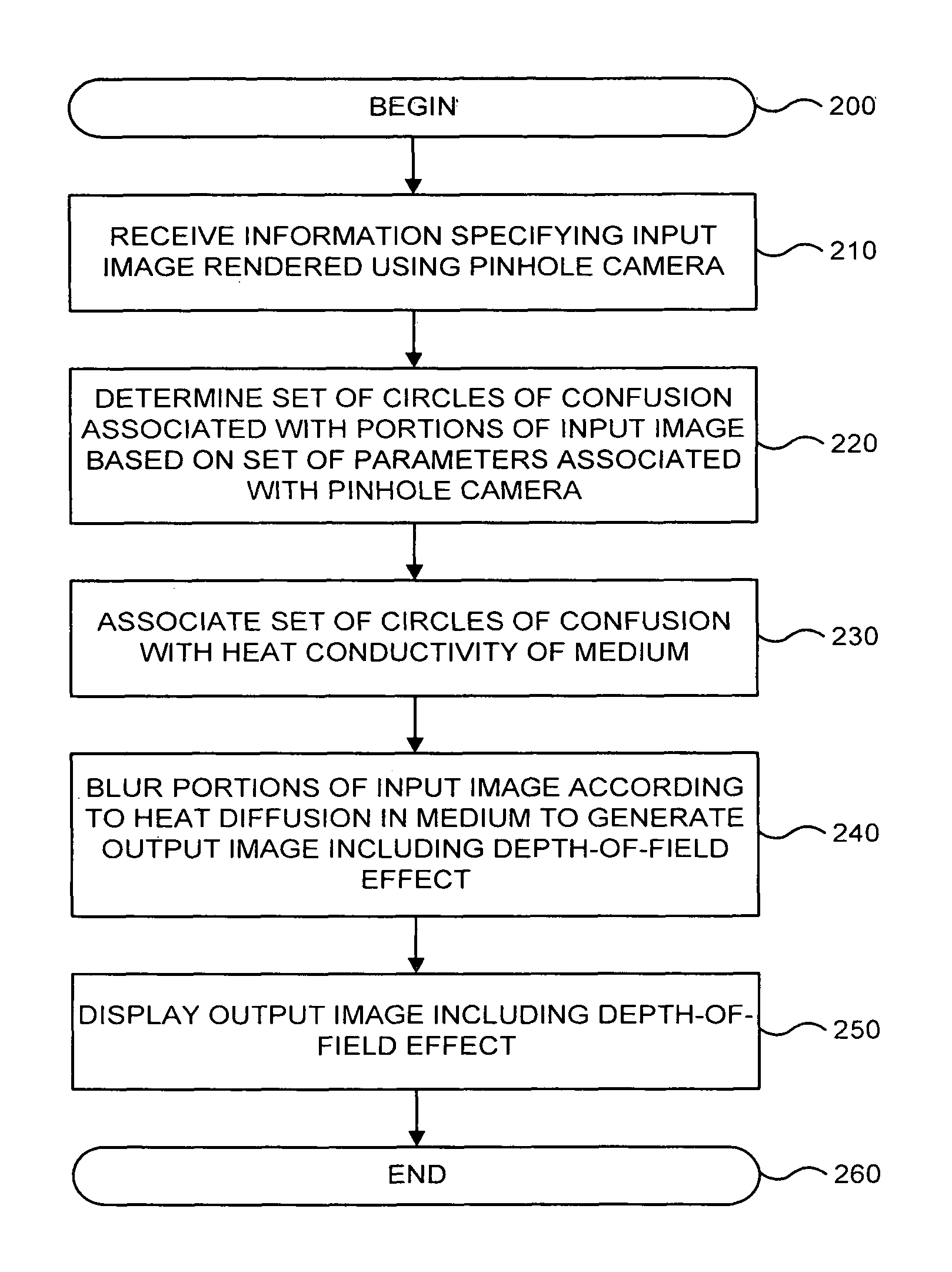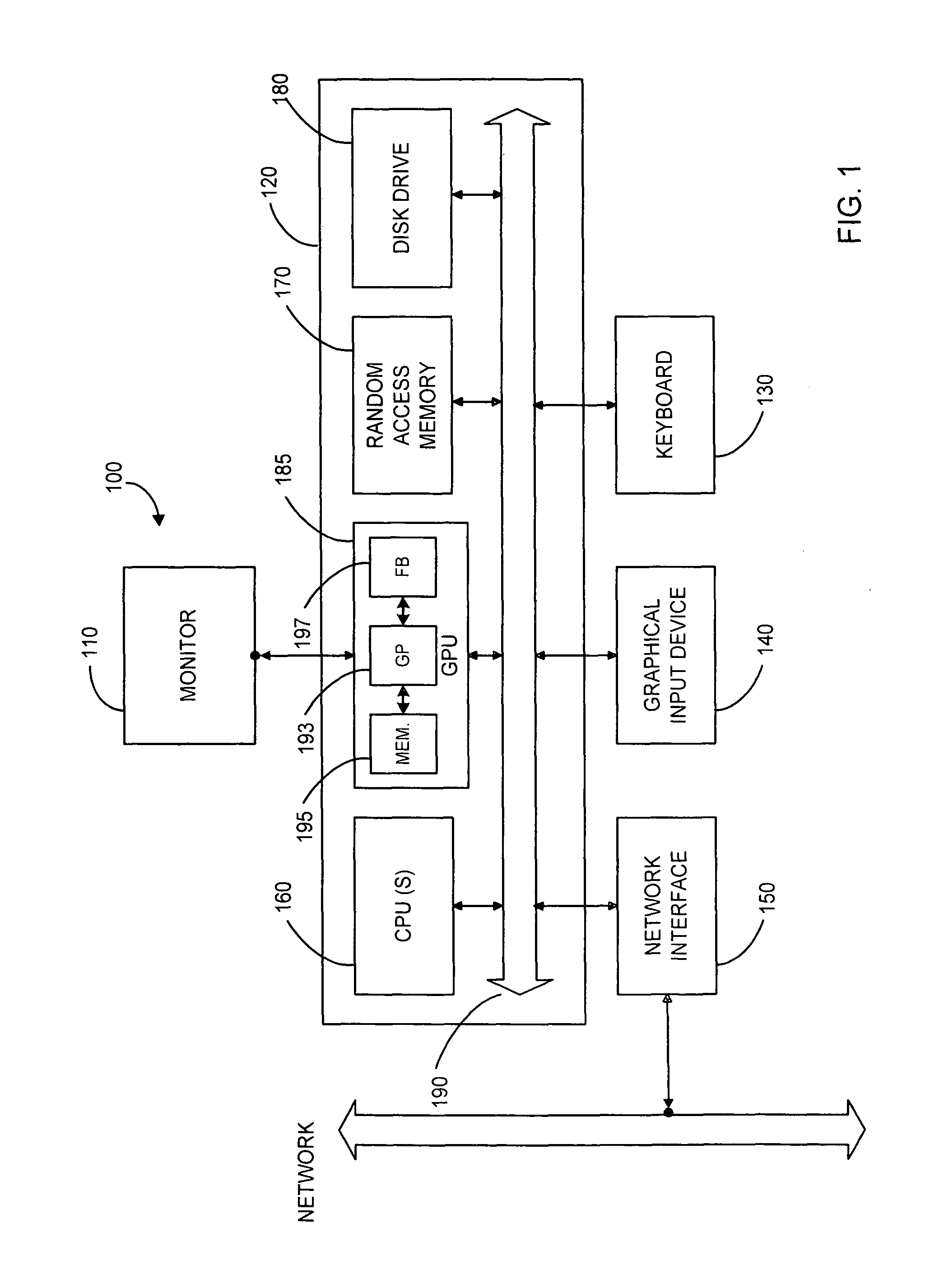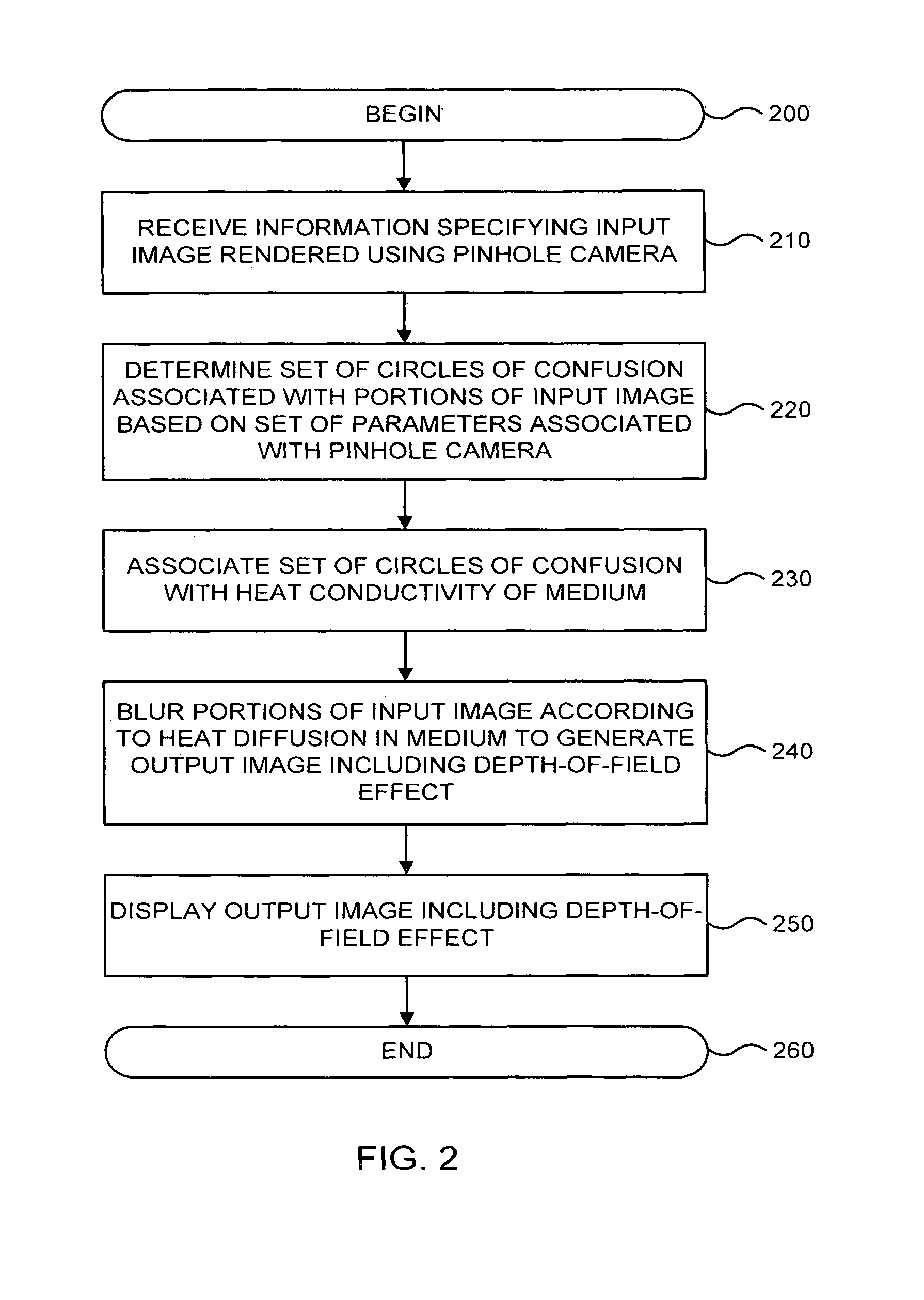Interactive depth of field using simulated heat diffusion
a technology of depth of field and simulation, applied in the field of computer graphics, can solve the problems of high cost of creating and direct effects, inability to accurately compute the depth of field effect in computer graphics rendering, and inability to accurately compute the depth of field effect. the effect is both costly and difficult to direct, and the computation needed to compute the effect is traditionally very slow and unwieldy
- Summary
- Abstract
- Description
- Claims
- Application Information
AI Technical Summary
Benefits of technology
Problems solved by technology
Method used
Image
Examples
Embodiment Construction
[0035]The present invention relates to computer graphics. More specifically, the present invention relates to methods and apparatus for creating interactive depth of field effects using simulated heat diffusion.
[0036]In various embodiments, methods and apparatus for generating depth-of-field (DOF) effects according to the present invention generate depth-of-field effects by simulating heat diffusion in a medium (e.g., a non-uniform or uniform medium) are provided. In general, simulating heat diffusion in the medium gives rise to separable spatially varying recursive filters that can compute large-kernel convolutions in constant time per pixel while respecting the boundaries between in-focus and out-of-focus objects.
[0037]In some embodiments, methods and apparatus for generating depth-of-field (DOF) effects according to the present invention use a graphics processing unit (GPU). Depth-of-field effects may be vectorized and achieve interactive frame rates suitable for games and high-q...
PUM
| Property | Measurement | Unit |
|---|---|---|
| depth-of-field effects | aaaaa | aaaaa |
| implicit solution | aaaaa | aaaaa |
| heat equation | aaaaa | aaaaa |
Abstract
Description
Claims
Application Information
 Login to View More
Login to View More - R&D
- Intellectual Property
- Life Sciences
- Materials
- Tech Scout
- Unparalleled Data Quality
- Higher Quality Content
- 60% Fewer Hallucinations
Browse by: Latest US Patents, China's latest patents, Technical Efficacy Thesaurus, Application Domain, Technology Topic, Popular Technical Reports.
© 2025 PatSnap. All rights reserved.Legal|Privacy policy|Modern Slavery Act Transparency Statement|Sitemap|About US| Contact US: help@patsnap.com



